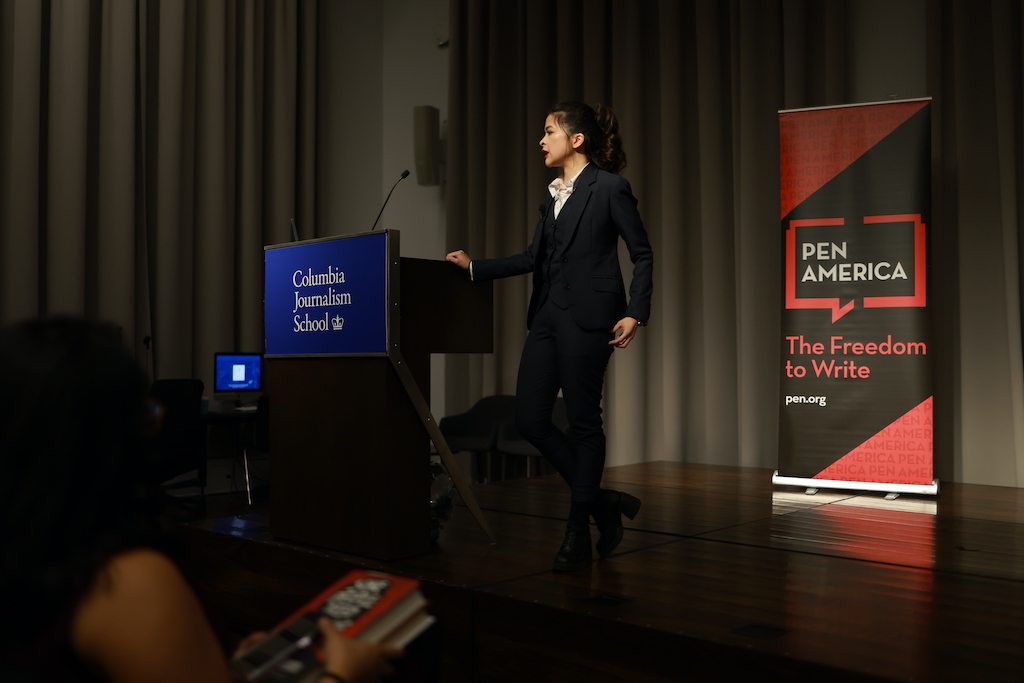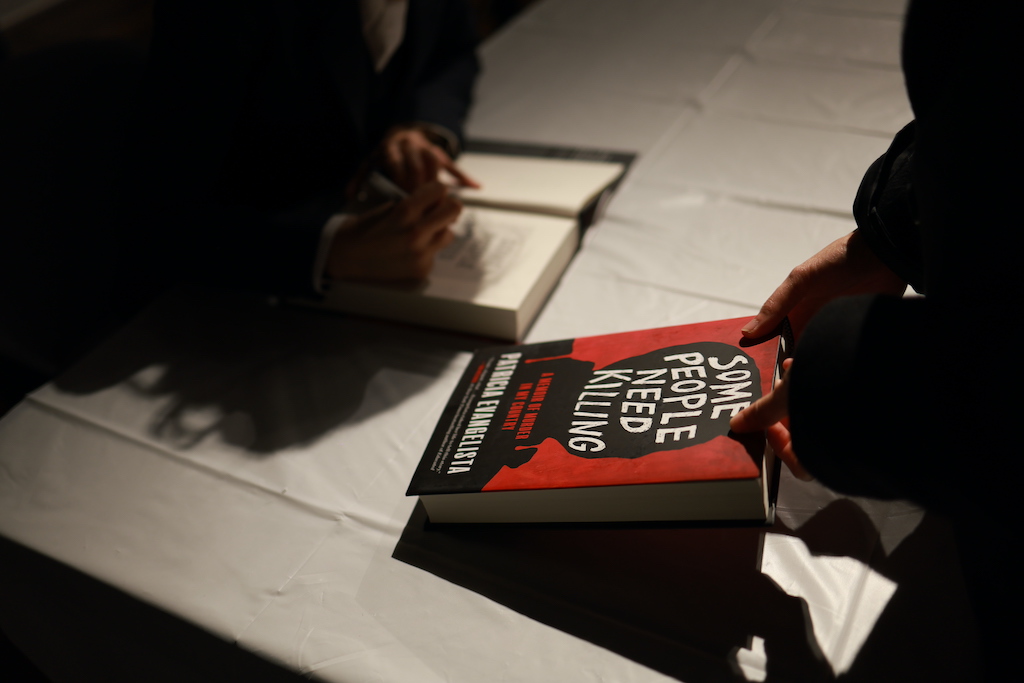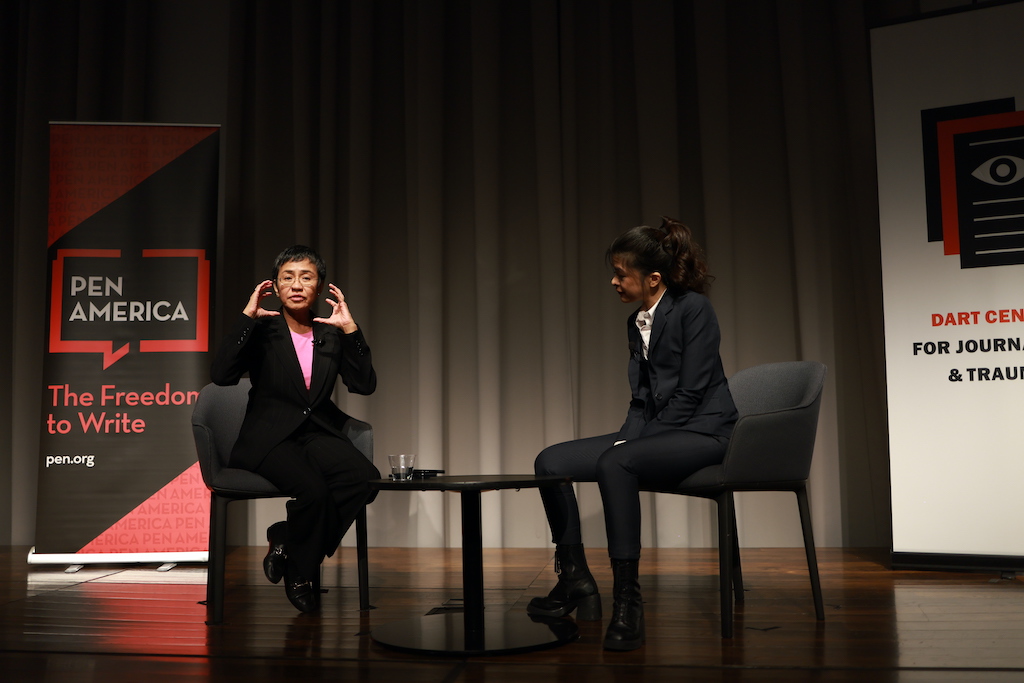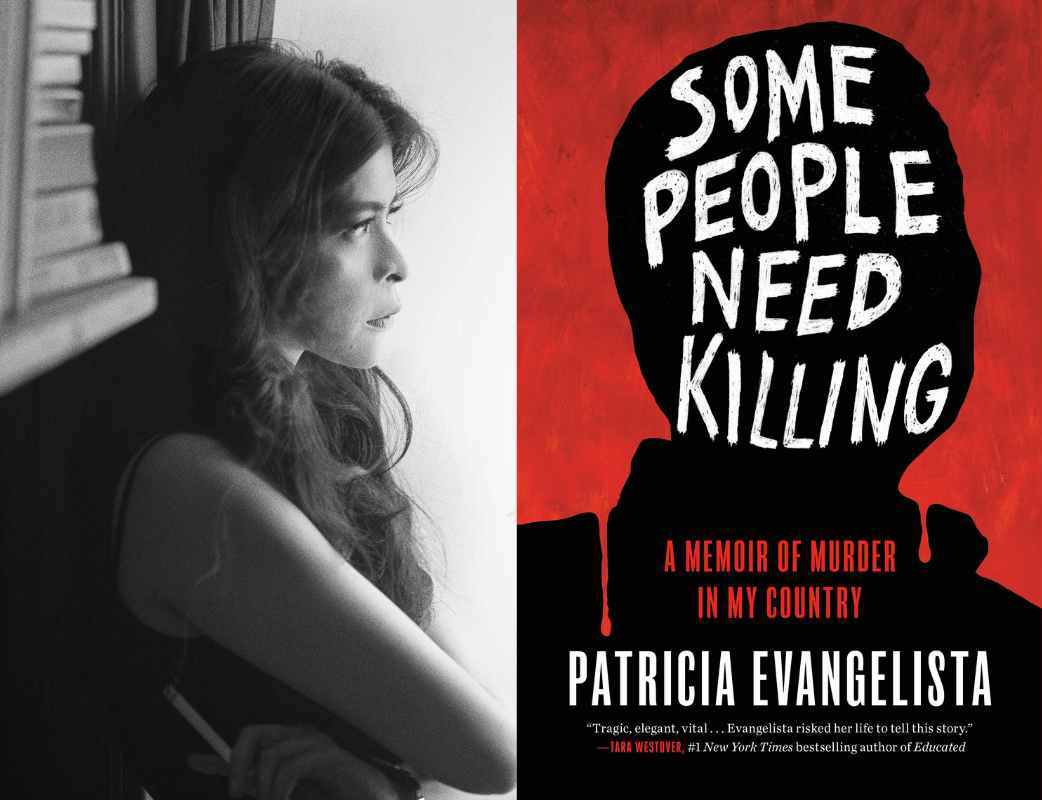Before anything, Patricia Evangelista is a storyteller.
The launch of her new book, “Some People Need Killing,” at the Columbia University School of Journalism begins with Evangelista onstage: high ponytail, red lipstick, gray three-piece suit, black boots. She delivers a monologue adapted from the book’s first chapter, which recounts the story of Love-Love, an eleven-year-old girl, who watched gunmen kill both of her parents in the early months of former President Rodrigo Duterte’s drug war. Evangelista recounts the killing in sharp detail. In the audience apart from the occasional low gasp, you can hear a pin drop. Few things make the point quite as well as a story does.
[READ: War on drugs: The violence, scars, doubts and families it left behind]The monologue is an introduction of herself, too. Evangelista was born in 1985, right before the EDSA Revolution. Her job as a trauma journalist and investigative reporter, she says, “is to go to the places where people die. I pack my bags, talk to the survivors, write my stories, then go home to wait for the next catastrophe. I don’t wait very long.”

For three years, Evangelista covered Dutere’s drug war, a spate of extrajudicial killings that began the moment the president took office and whose death toll remains contested. She was on the night shift with a group of journalists, making their way to each of these crime scenes and reckoning with telling these stories. The book, published by Random House, weaves its narrative around her encounters with victims’ families, a slew of policemen, and a few hired/vigilante killers, one of whom supplied the title. In an interview with Evangelista, he said, “I’m really not a bad guy. I’m not all bad. Some people need killing.”
And if nothing else, [trauma journalism]’s the act of trying. We’re going to keep failing.
In conversation with Maria Ressa, Evangelista’s former boss at Rappler, where her stories ran, she explains that her investigative work is borne of a love for stories. “Every story is a love story—a mother to a child, a husband to a wife,” she says. “Every story is a whole person. And, if nothing else, in the first place, I’m interested. In the second place, I would like to honor the person whose body is on the ground, whose family is waiting. So I dive because I think what happened deserves more than one sentence on a spot report.”
I meet Evangelista a few days after outside a late-night pizza spot in Brooklyn. Amidst the occasional passing siren, we talk at length about the book and its stories.
‘I needed to ask more questions’
The book began as a summation of those years of nightly reportage, but it grew to be more complex than that. “I was reporting on the deaths and I was doing it story by story, crime scene by crime scene,” she says. “It occurred to me, sometime after those first two, almost three years that I needed to ask more questions. Not so much about how people died or who was it that died. I needed to know why. I wanted to know why. That’s what the book is: It’s why we kill.”
American novelist and screenwriter George R.R. Martin describes two types of writers: architects and gardeners. Evangelista identifies as an architect. “Some People Need Killing” is a testament to that. The book, answering the question of why we kill, isn’t shaped as a straight retelling of her reportage. It’s this well-crafted passage through the interlocking narratives of the war, divided into three parts—Memory, Carnage, and Requiem—that deal respectively with Duterte’s rise, the war that began after his election, and its aftermath.
“Memory” offers a sweep through the decades of Filipino history leading up to Duterte. “His election and the carnage that came after that was not an overnight event. It came from something else. So, I wanted to establish that: that the carnage was not sudden but borne of years of failed expectations as well,” Evangelista says.

“I understood early on that any book published globally about the Philippines would inevitably have to be an explainer about the Philippines… I would hope, also, that in the future, when Filipinos read it from a different generation, a different context—if the book still exists in 20 or 30 years—then there would be nuances of where we come from and what we were writing for.”
Parts of the book, too, contend with questions of language itself. Evangelista fixates on language (all writers do), but semantics takes on a different tone in the work of reporting on murder. She says, “A lot of what’s in the book are questions I asked myself on the streets or even at my desk. ‘Why is there no synonym for “bleed?”’ ‘How come I couldn’t find another word for “corpse?”’ ‘Why was it that on paper it was so difficult to write down what Rodrigo Duterte said, but hearing it, it seemed perfectly natural and almost inevitable?’”
She also delves into the origin of the word “salvage”—a contronym, she says—as used in the Philippine context; the usage of “disappear” as a transitive verb (for example: “The military disappeared the women”); the verbs of violence (“trigger to finger,” “knife to gut”); how Duterte said the word “kill” at least 1,254 times in the first six months of his presidency. This, too, is a question of rhetoric: How does language set violence into motion?
Accounting for oneself
The book is subtitled “A Memoir of Murder in My Country.” In that sense, one of the narratives integrated into Evangelista’s blueprint is her own. Chapter 3: “Mascot for Hope” dips into sections of autobiography, where Evangelista narrates her childhood in the wake of the EDSA Revolution, her beginnings in debate and public speaking as an undergrad at the University of the Philippines and how that led her to journalism and what became her day-to-day work. These root us in a personal story entwined in a national history.
It took a long time to not only find my own voice but to also be willing to use it.
Evangelista did not intend for the book to be a first-person account. “I am not comfortable with being in front of the camera and using my own voice as an individual, but Random House felt that for a book like this, with the grimness and carnage involved, it would be best to have someone to guide people through it and it was going to have to be me. I took a very long time wrestling with that,” she says.
“It took a long time to not only find my own voice but to also be willing to use it. I would like to add, though, that while the first person was not strictly voluntary, as the process went on, I felt I had to account for myself as well. I’m glad for how it turned out. I’m also glad I had to do it because I never would have done it if it wasn’t required of me.”
Whether it’s David Remnick of The New Yorker or an earnest journalism student at the question and answer at Columbia, what many people ask Evangelista is how she survives reporting on trauma, going out night after night to find bodies, and living with the stories of the dead for far longer as she writes.

“For the reporter, there’s the awareness that you’re not the camera,” she says. “You’re going to have to absorb this, and the manner I report means I absorb it more deeply than most because I have to get the details and I have to see it as people have either seen it or imagined it. The way I write means I also have to live through it repeatedly when I write the story, tell the story, or just run the crime scene through in my head.”
There is no direct answer to how, but she does survive it. “It is important to have a tribe of people who understand what you do. Self-care is also important… Maybe having a life separate from the job is important. Maybe just being healthy is important,” she profers. “There are many ways to cope, but for me, it’s not one way.”
The book manages as well to show the care she employs as a trauma journalist. Evangelista is clear on her methodology, one she developed in the hopes of telling the story without endangering or retraumatizing the people who must tell the stories “that require some sort of record and some sort of reckoning.”

She says, “Informed trauma journalism means you understand where people are coming from, that you don’t force them into answers that they don’t want to tell you, that you respect consent absolutely, that not only do you ask for consent but you also tell them what that consent means. You also are aware that your presence in the aftermath can re-traumatize other people. It’s all of those elements. And if nothing else, it’s the act of trying. We’re going to keep failing.”
To one of Ressa’s questions at the launch, Evangelista responds that she doesn’t believe journalism will save the world, that there is no “magical phalanx of humanity standing in between the addicts and the gun.” The value of the story, she believes, is perhaps the record itself, and the hope that it will be part of some reckoning. “My expectation is to keep a record. A good one, I hope. A compelling one, I hope. I hope to honor the people, who trusted me with their stories, who took the risks that are far beyond the risks I ever took.”
Before anything, Patricia Evangelista is a storyteller.
I ask what’s next for her and all she can think of, after three years of covering a drug war and four years of writing a book, is the next story.
“I thought that when the book was completed, I would know what to do next. I don’t,” she says. “What I do know is there are many stories and there’s always a next storm, and this story isn’t over. I know I’m going back on the field. I’m going home.”




